To wash your vintage cashmere scarf, first check the care label for specific instructions. If hand washing is permitted, fill a basin with lukewarm water and add a cashmere-specific detergent. Submerge the scarf and gently agitate for about 30 minutes, then rinse with cool water until no soap remains. Avoid twisting; instead, press to remove excess water. Lay the scarf flat on a towel to dry, reshaping it as needed. Always store it in a cool, dry place to prevent damage. For more tips on care and storage, you'll find valuable insights ahead.
Understanding Cashmere Care Labels
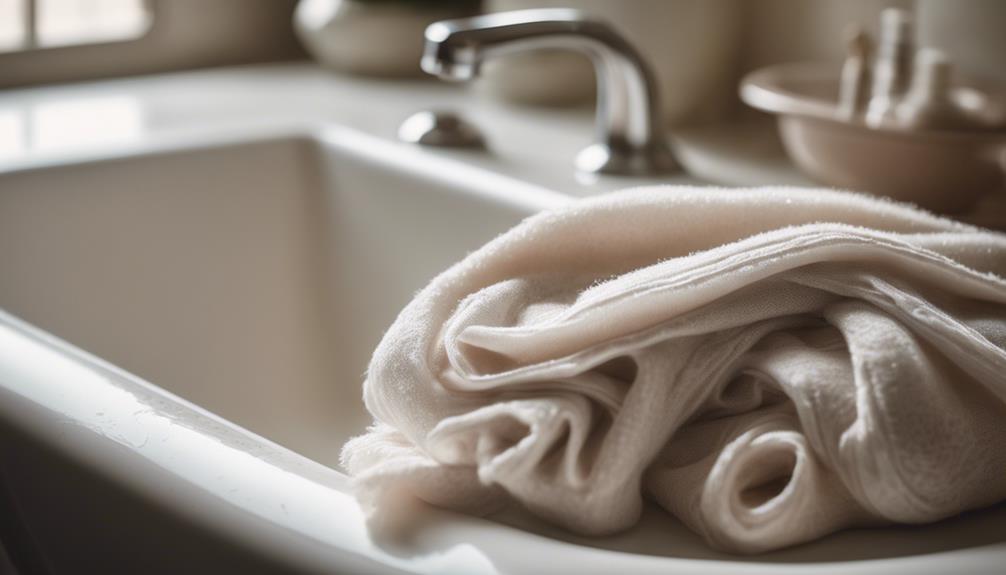
When you pick up a vintage cashmere scarf, the first step is to carefully examine the care label. This small tag holds vital information about cashmere care, guiding you on the best washing methods. Look for symbols—like a bucket for washing or a triangle for bleaching—that indicate how to handle this delicate fabric.
Understanding the historical context of brands can also provide insight into the quality and care requirements of your scarf, especially if it bears labels from renowned designers known for craftsmanship, such as those from the 1970s and 1980s vintage clothing labels.
If the label specifies "dry-clean only," heed that advice to maintain the scarf's integrity. However, if it suggests hand washing, you can gently clean it yourself. Use a mild detergent specifically designed for cashmere, as it's important to avoid harsh chemicals that can damage the fibers.
Following the care label instructions directly impacts the scarf's softness and shape. Improper care can lead to pilling, shrinkage, or a dull appearance, especially in vintage pieces that require extra attention.
Regularly checking the care label guarantees your cashmere remains properly cared for and maintains its original shape. By adhering to these guidelines, you can preserve the luxurious feel and beauty of your vintage cashmere scarf for years to come.
Choosing the Right Detergent
To guarantee your vintage cashmere scarf remains in pristine condition, choosing the right detergent is essential. Opt for a detergent specifically formulated for cashmere, making certain it's gentle, pH-neutral, and free from harsh chemicals. This will help preserve the delicate fibers that give your scarf its luxurious feel.
Look for reputable brands that specialize in fine fabric care. These companies have developed detergents that balance cleaning power with fabric preservation, making certain your scarf not only gets clean but also maintains its softness and appearance.
Avoid regular laundry detergents, as they can be too harsh and may lead to damage such as pilling or loss of softness over time.
Before making a purchase, always check the care label on your cashmere scarf for any specific recommendations regarding detergents or cleaning products. Following these guidelines will make certain your vintage cashmere scarf looks great and lasts longer.
Hand Washing Techniques
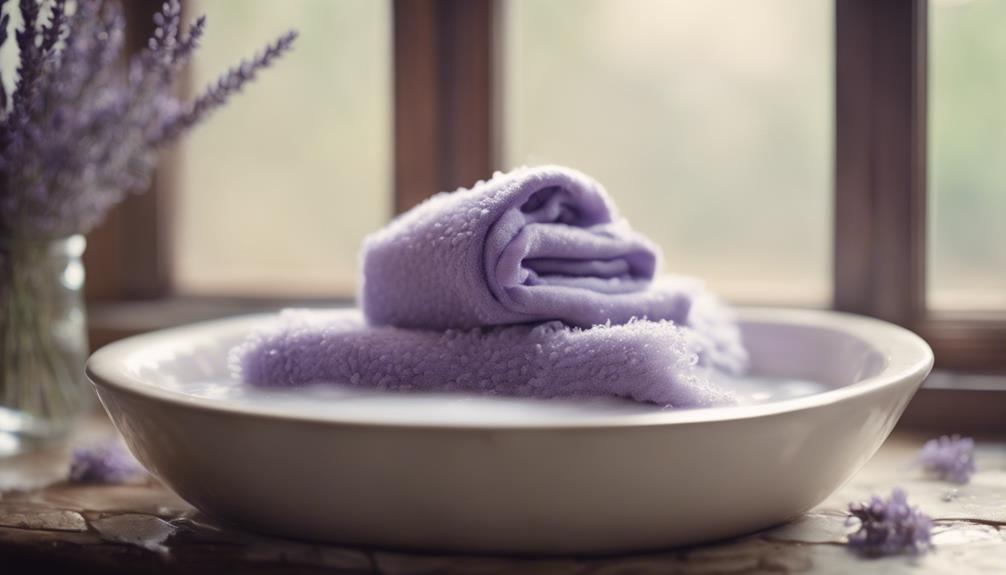
Washing your vintage cashmere scarf by hand is a gentle yet effective method to keep it looking its best.
Start by filling a clean basin or sink with lukewarm water, then add a small amount of cashmere-specific detergent to create a gentle cleaning solution.
Gently submerge your cashmere scarf into the water, allowing it to soak for about 30 minutes. Occasionally agitate the water with your hands to help loosen any dirt.
After soaking, carefully rinse the scarf in cool water. Be sure to press out excess detergent without wringing or twisting the fabric, as this can cause damage to the delicate fibers.
To remove excess moisture, lay the scarf flat on a clean, dry towel, roll it up gently, and press to absorb moisture without stretching the material.
Machine Washing Guidelines
If you're considering machine washing your vintage cashmere scarf, it's vital to take some precautions to guarantee it stays in great shape. Follow these guidelines to make sure your scarf remains beautiful:
- Prepare Your Scarf: Turn your scarf inside out to protect the surface fibers from abrasion during the wash cycle. This simple step helps maintain its original form.
- Use the Right Tools: Place your scarf in a mesh laundry bag to safeguard it from snagging and minimize friction with other garments. This extra layer of protection is essential when you machine wash cashmere.
- Choose the Correct Settings: Select the delicate cycle on your washing machine and use cold water to prevent any damage.
Add an appropriate amount of cashmere-specific detergent that's gentle and free from harsh chemicals. After washing, avoid spinning or use the lowest spin setting to reduce the risk of stretching.
Rinsing Your Cashmere Scarf
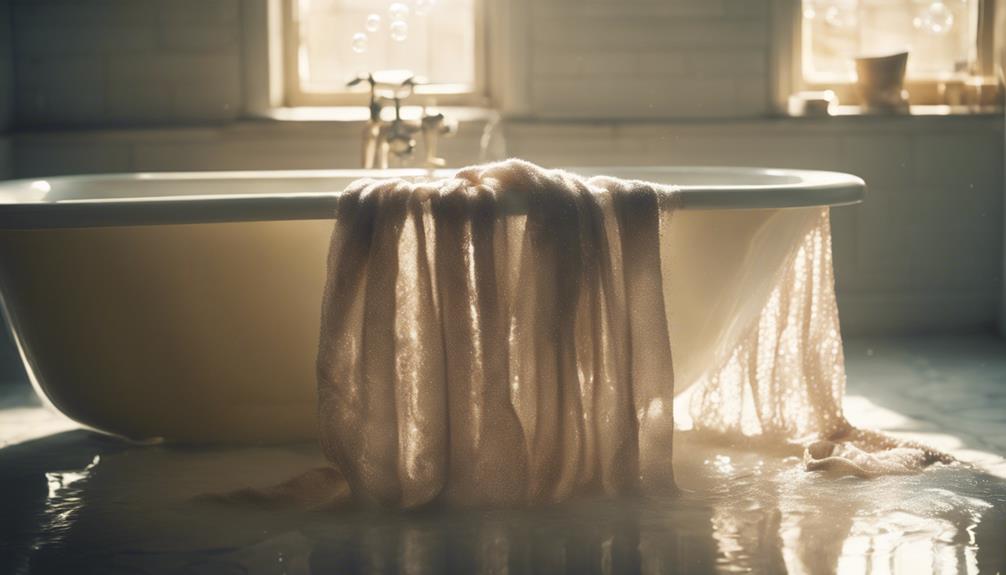
Rinsing your vintage cashmere scarf is an essential step to guarantee it retains its luxurious feel and appearance. Start by using clean, cool water to rinse the scarf thoroughly. This helps remove all detergent residue that can lead to fabric stiffness if left behind.
To properly rinse, follow these steps:
| Step | Action | Tip |
|---|---|---|
| 1. Rinse | Submerge the scarf in cool water. | Avoid hot water to prevent shrinking. |
| 2. Remove | Gently press the scarf against the basin's side to expel excess water. | Don't wring or twist; it distorts fibers. |
| 3. Check | Continue rinsing until the water runs clear. | This indicates the scarf is properly cleaned. |
| 4. Condition | Add a small amount of fabric conditioner during the final rinse. | This enhances softness without compromising cashmere integrity. |
Proper Drying Methods
After you've rinsed your vintage cashmere scarf, it's vital to focus on proper drying methods to preserve its delicate fibers and shape. Here's how to guarantee your scarf dries correctly:
- Gently Blot: Start by gently blotting the scarf with a clean, absorbent towel. This helps remove excess moisture without rubbing or twisting the fabric, which could damage the fibers.
- Lay Flat and Reshape: Next, lay the scarf flat on a dry towel, reshaping it to its original form. This step is fundamental for maintaining its shape and preventing stretching during the drying process.
- Rotate for Even Drying: While air drying, rotate the scarf periodically. This guarantees even moisture evaporation and prevents damp spots that could lead to mildew.
Remember to avoid direct sunlight and heat sources like dryers or radiators, as these can shrink the fabric.
Instead, let your scarf dry naturally in a cool, dry area. Using this slow drying method will help maintain its luxurious softness and integrity, allowing you to enjoy your vintage cashmere scarf for years to come.
Importance of Flat Drying
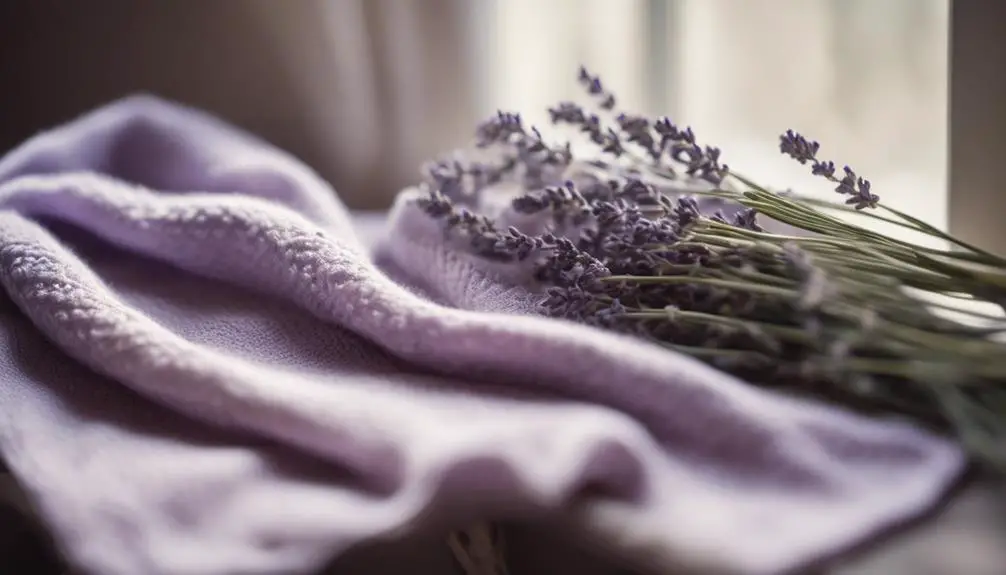
Proper drying techniques, particularly flat drying, play a significant role in maintaining the quality of your vintage cashmere scarf. By laying your scarf flat, you help it maintain its shape and prevent any stretching that can occur when hung or draped. This method promotes even air circulation around the delicate fibers, allowing for a gentle drying process that preserves its luxurious softness.
To begin, gently roll your scarf in a clean towel to absorb excess moisture before laying it flat. This step not only expedites drying but also guarantees your scarf retains its original form.
During the drying process, regularly reshape the scarf, adjusting its structure to enhance both its longevity and aesthetic appeal. Remember to avoid wringing or twisting the fabric, as these actions can damage the delicate fibers, leading to unsightly distortions.
Storing Your Cashmere Scarf
When it comes to storing your cashmere scarf, choosing the right environment is vital for preserving its quality and longevity. Follow these steps to guarantee your vintage cashmere scarf stays in excellent condition:
- Select a cool, dry place: This helps prevent moisture buildup, which can lead to mold and mildew. Avoid areas with high humidity, like basements or attics.
- Wrap with acid-free tissue paper: This protects against dust and maintains the scarf's shape. Don't use plastic bags or cardboard boxes, as they can trap moisture and attract pests.
- Incorporate cedar blocks: Adding cedar blocks or scented naphthalene balls to your storage solution keeps pests at bay, safeguarding your cashmere fibers.
Additionally, it's important to regularly inspect stored cashmere for any signs of moth damage or deterioration.
By taking these precautions, you'll protect against dust and guarantee your cashmere scarf remains a cherished accessory for years to come.
Properly storing your cashmere scarf not only enhances its longevity but also keeps it looking and feeling luxurious every time you wear it.
Preventing Pilling and Damage
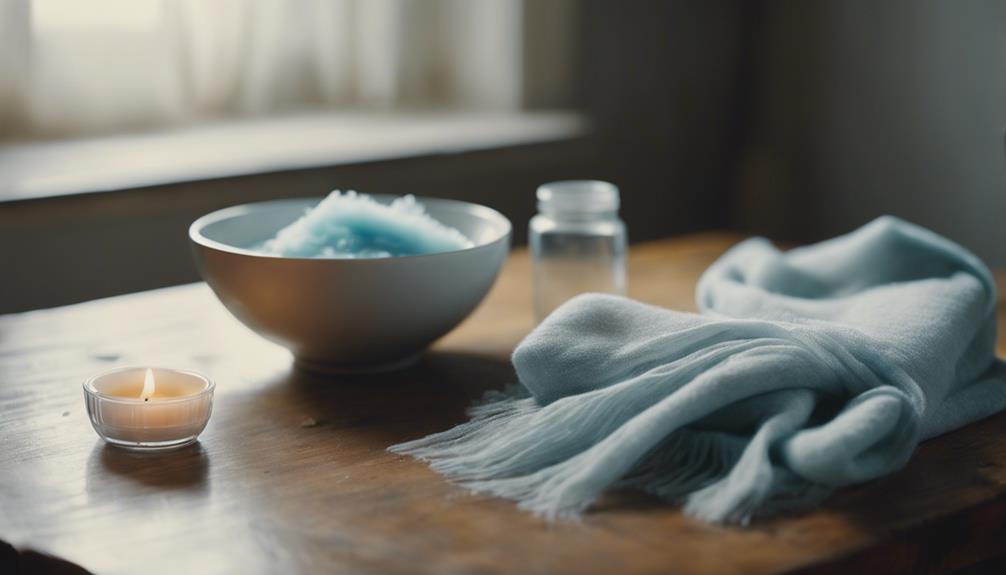
To keep your vintage cashmere scarf looking pristine and prevent unsightly pilling, you need to take a few proactive steps. First, be mindful of the fabrics you wear with your scarf. Avoid rough materials or accessories that can create friction against the delicate fibers, as this can lead to pilling.
When it's time to wash your scarf, always opt for hand washing in lukewarm water using a cashmere-specific detergent. This minimizes agitation and stress on the fibers, helping to prevent pilling.
After washing, gently lay your scarf on a flat surface to dry—never hang it up, as gravity can stretch the fibers and increase the likelihood of damage.
Regular maintenance is key, too. Use a cashmere comb or fabric shaver to gently remove any pills that do form, keeping your scarf looking smooth and tidy.
For ideal storage care, fold your cashmere scarf in a cool, dry place. Including cedar blocks or sachets can deter moths while helping to maintain the integrity of the fibers over time.
Spot Cleaning Techniques
Even with careful handling and maintenance, accidents can happen, leaving your vintage cashmere scarf in need of spot cleaning.
Follow these steps to guarantee effective treatment of the stained area:
1. Identify the Stain: Determine the type of stain to choose the right cleaning solution. For greasy stains, sprinkle baking soda on the stain for 15-20 minutes before proceeding.
2. Prepare Your Cleaning Solution: Mix lukewarm water with a small amount of cashmere detergent.
Take a soft cloth or sponge, soak it in the solution, and gently dab the stained area. Remember, don't rub the fabric as it can damage the delicate fibers.
3. Rinse Thoroughly: After treating the stain, rinse the area with clean, cool water to remove any soap residue.
Avoid soaking the entire scarf.
Frequently Asked Questions
Can I Put a Cashmere Scarf in the Washing Machine?
You can put a cashmere scarf in the washing machine, but it's risky. If you do, turn it inside-out, use a mesh bag, select a delicate cycle, and always opt for cold water.
How Do You Clean Vintage Cashmere?
To clean vintage cashmere, fill a basin with lukewarm water, add a gentle detergent, and soak it for 30 minutes. Gently agitate, rinse thoroughly, and lay it flat to dry, reshaping as needed.
How to Clean 100% Cashmere Scarf?
To clean your 100% cashmere scarf, fill a basin with lukewarm water and a cashmere-specific detergent. Soak for 30 minutes, rinse gently, reshape on a towel, and air dry away from heat and sunlight.
Is It Better to Hand Wash or Dry Clean Cashmere?
You should hand wash cashmere instead of dry cleaning. Hand washing preserves the fabric's softness and structure, while dry cleaning can weaken fibers. Use lukewarm water and a cashmere-specific detergent for the best results.




